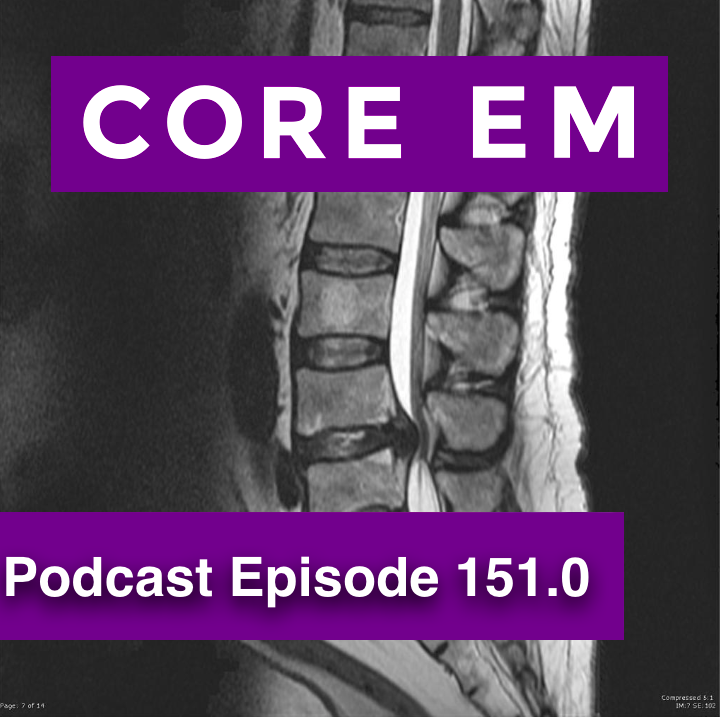This week we discuss the difficult to diagnose and high morbidity cauda equina syndrome.

 Core EM - Emergency Medicine Podcast
Core EM - Emergency Medicine Podcast Episode 151.0 – Cauda Equina Syndrome
Jun 25, 2018
05:04
Show Notes
Take Home Points
- Cauda equina syndrome is a rare emergency with devastating consequences
- Early recognition is paramount as the presence of bladder dysfunction portends bad functional outcomes
- The presence of bilateral lower extremity weakness or sensory changes should alert clinicians to the diagnosis. Saddle anesthesia (or change in sensation) and any bladder/bowel changes in function should also raise suspicion for the disorder
- MRI is the diagnostic modality of choice though CT myelogram can be performed if necessary
- Prompt surgical consultation is mandatory for all patients with cauda equina syndrome regardless of symptoms at presentation
Read More
EM Cases: Best Case Ever 11: Cauda Equina Syndrome
OrthoBullets: Cauda Equina Syndrome
Radiopaedia: Cauda Equina Syndrome
Perron AD, Huff JS: Spinal Cord Disorders, in Marx JA, Hockberger RS, Walls RM, et al (eds): Rosen’s Emergency Medicine: Concepts and Clinical Practice, ed 8. St. Louis, Mosby, Inc., 2010, (Ch) 106: p 1419-30.
References
Lavy C et al. Cauda Equina Syndrome. BMJ 2009; 338: PMID: 19336488
Todd NV. Cauda equina syndrome: the timing of surgery probably does influence outcome. Br J Neurosurg 2005;19:301-6 PMID: 16455534
Read More

